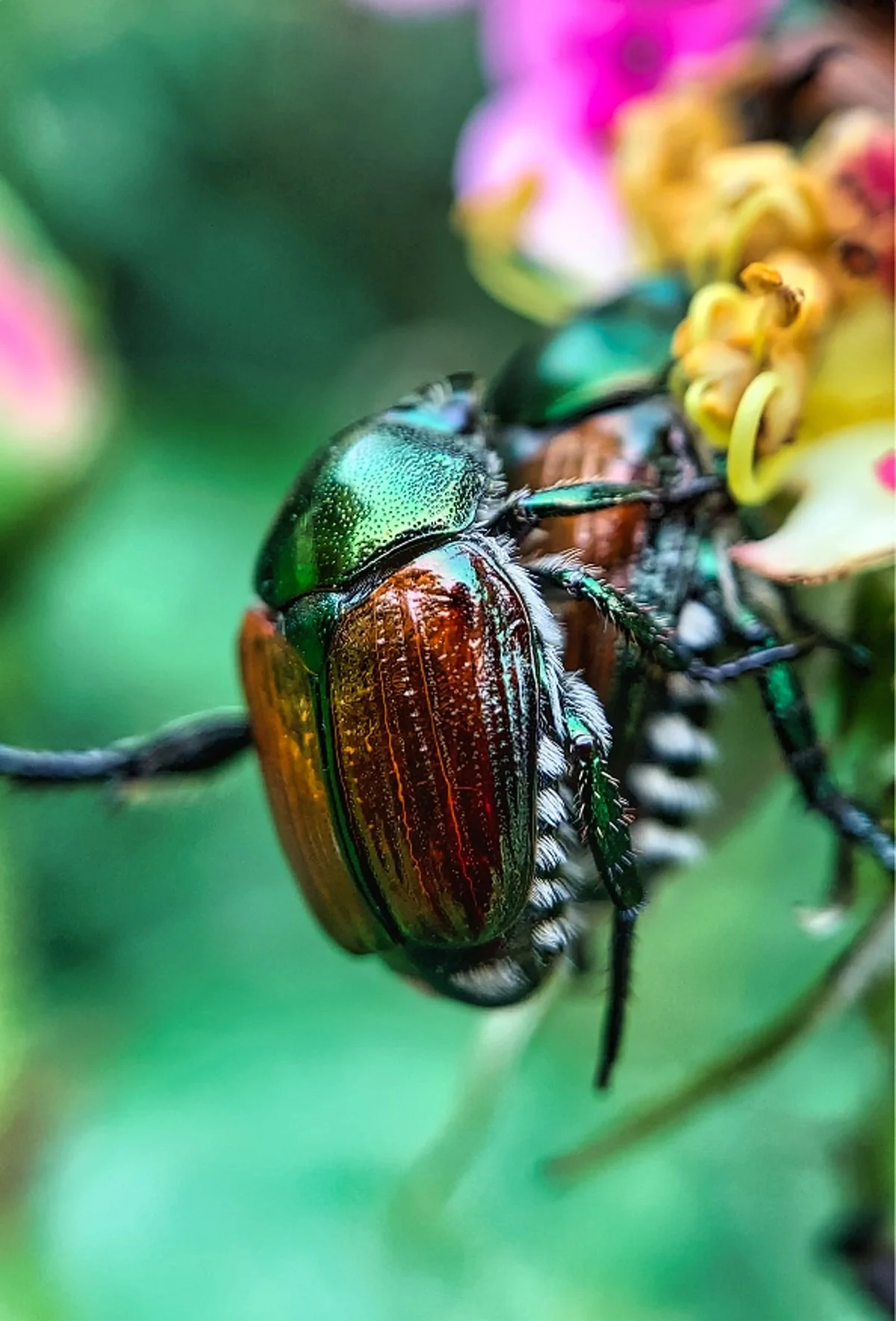Garden Pests: Insect Edition
You asked and we’re here to help! Some of the most common questions we get at gardenologie are about garden pests and the damage they do in the home garden.
From prevention to identification and remedies, we have curated some of your most asked questions and brought you the answers that you need now to help your garden.
I’ve noticed some damage in the garden but can’t seem to find the culprit, when is the best time of day to check for garden pests?
Dawn and dusk are a great time to check for garden pests, with our preference being the morning. Often times you’ll find that when the sun is not high in the sky there is more insect activity and it is easier to detect and identify who might be lurking in the garden. Be sure to check the surface of the soil, both sides of plant leaves, the plant stem, flowers and any fruit that it might also produce. You’ll want to look for not only insects but also their poop and their eggs. Be a garden detective!
What garden pests are harmful versus what garden pests are just pesky?
This is a great question! Let’s take a moment to chat first about beneficial insects.
Beneficial insects and mites belong to three categories: predators, parasitoids, and pollinators. Predators capture and eat other organisms such as insects or mites. Predators include ladybird beetles, ground beetles, lacewings, syrphid (hover) flies, aphid midges (Aphidoletes) and yellowjacket wasps. Parasitoids are insects that parasitize other insects. The immature stages of parasitoids develop on or within its host, eventually killing it. Parasitoids may attack all stages of their host (eggs, larvae, nymphs, pupae, adults). Pollinators include honeybees, leafcutter bees, other wild bees, butterflies, moths and other insects that visit flowers to feed on nectar and pollen. Pollinators transfer pollen in and between flowers of the same species (pollination) which is essential to seed and fruit production for plants.
By taking the time to learn a bit more about these beneficial insects, you’ll be able to actively distinguish them from their nefarious counterparts.
What is the best way to deal with pests organically?
Because the garden is a living and thriving ecosystem, the best approach to removing pests is one that is extremely targeted. This means that only the pest is being removed and no broad-spectrum insecticides are harming the biodiversity of the garden.
Here are some of our most recommended strategies:
Handpicking: great for slugs, cabbage butterfly larva, cucumber and potato beetles
Going out early morning with a mason jar of soapy water to dispose of the pest: works well with Japanese beetles
Using a strong blast of water from your hose: smaller pests like aphids
Creating a physical barrier between your plant and the pests: a preventative method that is great for preventing cabbage white butterflies, leaf miner and flea beetles
How can I make my garden less attractive to pests?
Strong plants are proven to be more pest-resistant than weak ones. And we’re going to sound like a broken record here, but strong plants come from great living soil. So truly, improving your soil is a great way to improve the outcome in your garden.
The other key is diversity. We want to plant a diverse selection of plants to make sure we are attracting lots of different insects into our micro-ecosystems. The use of harmful pesticides, fungicides and herbicides can drastically reduce the number of beneficial and harmful insects and really throw the garden out of balance.
Are there products that are more harmful than others?
YES! There are some products that are very broad spectrum in how they work. This means that they truly can destroy everything from weeds to worms. You truly want to avoid anything that contains the chemical glyphosate.
Does companion planting work: for example, can I plant something to deter aphids from my roses?
Our approach focuses less on exact companion planting and more on creating diversity in the garden. That being said, there is some research that supports companion planting strategies. For example, adding plants from the allium family (like chives, ornamental alliums, garlic and onions) can help deter aphids from roses.
Quick-fire questions:
How do I deal with slugs? Reduce the moisture on the surface of your soil by watering early in the morning rather than later in the day. Hand pick or sink some plastic cups with beer into the garden to trap them.
How do I deal with aphids? Be patient; often letting a small presence of aphids form will bring a population of ladybugs around to feast on them. You can also blast them off with a strong stream of water from your hose
How do I deal with cabbage white butterflies on my kale? Hand pick and lay row cover over your kale



